I didn’t know what to expect from Education 431: Education Technology. I thought I would learn about how to use things like fresh grade and block coding games made for children. While I did learn about those things, I was also introduced to a vast world full of passionate teachers from around British Columbia who are using EdTech in creative and unique ways in their classrooms daily. I was blown away by the opportunity to hear all of these wonderful teachers speak about their experience with technology in the classroom. During Education 431 I was encouraged to create a PLN and run my own professional twitter account. I learned how to somewhat successfully blog and tweet and was inspired every day by the professionals I met online.
At the end of Education 431 I left feeling inspired and questioning how I could use EdTech in my practicum class. I was a little discouraged once I realized the reality of access to technology in the local schools. Most elementary schools in the district only have enough computers for one class at a time (roughly 30) and they may be a part of a mobile lab or they are in a separate computer lab. Tablets are non-existent in the public-school district and are only used to help students with special needs to communicate. In my practicum class I am fortunate enough to have access to a smartboard and the teacher’s laptop. I struggled to think of how I could incorporate EdTech into my grade one class until I was researching inquiry projects in Harvey Daniels’ book The Curious Classroom. In this book Daniels has a chapter about a classroom in the US where students observed an eagle nest via a webcam that a local university had set up to monitor the nest and the eagles that lived in it. Every morning the teacher would already have the webcam projected on the smart board and students would come in and write down or draw their observations of the nest. The teacher had such success with the webcam and the students showed such interest in the eagle family that the teacher began to leave the feed up all day. Students were invested in the eagle family and by leaving the feed up all day they got to witness many rare events in real time, such as the eagles hatching and the first time they left the nest. Students were able to observe and witness something that not many people are able to witness, and they incorporated what they had learned about eagles into all aspects of their classroom. They created an “eagles’ nest” reading lounge in their classroom and they built models of the nest and habitat. I was very inspired by this chapter and was excited because it opened up a new part of EdTech that I had never thought of before – webcams.
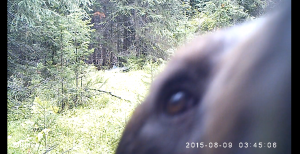
A curious grizzly bear checks out the trail camera in the summer of 2015. We did not know grizzly bears lived in the area until this bear began to make regular appearances on the camera.
Webcams are a very accessible form of EdTech as multiple organizations and universities around the world have set up webcams to observe the local wildlife. Cameras exist positioned in front of watering holes in Africa, in Churchill Manitoba to observe polar bears, and in Alaska there is a webcam operating in the summer that is pointed at a waterfall so that people can watch grizzly bears catch fish heading up the falls. All of these webcams are free and easily integrated into classrooms. I decided that I wanted to use webcams in my practicum class as I had already been tasked to teach a unit on local animals. My only problem was that I struggled to find a local webcam. The closest one I could find that was relevant and reputable was the one located in Churchill Manitoba. While this webcam is incredibly fascinating and no doubt educational for students, it is not very relevant to living in Northern BC. But then I remembered that my father-in-law, an avid bird watcher and wildlife enthusiast, had been setting up a trail camera on his property just north of Prince George for more than six years. These turned out to be the perfect response to my EdTech dilemma. I had found the videos I needed of local animals that would also intrigue my students. Now I just had to sift through years of 25 second videos to find what I was looking for.
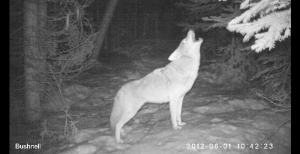
This coyote walked right in front of the camera and howled. Other coyotes can be heard in the background. Sometimes you get lucky with your camera placement and you capture something quite fascinating!
Trail cameras are motion and sound activated. My father in law positions his trail camera on a game trail on his property. Some of the videos he has managed to capture include black bear cubs wrestling, a grizzly bear, lynx, and a coyote howling, just to name a few. While the animals themselves are fun to watch, their behavior is sometimes even more interesting. Sifting through hundreds of videos I was able to observe things that are important aspects of the curriculum for students to understand such as the fact that rabbits will change colours depending on the season. This is an easily observable trait in the trail cam videos where you are able to witness the changing seasons and the change in the rabbit’s colour. Students are also able to observe the differences between mother and baby animals. Cows and calves are a common guest on the trail camera videos as well as a black bear and her two cubs. I created observation journals for students where they had a space to draw what they witnessed on the camera and then would label or write a small description of what was happening. I have carefully selected the different videos I plan to use and will have students focus on specific traits of the animals they are watching. Through this activity I will cover aspects of the grade one science curriculum as well as having students work on their writing. The opportunity to use trail cam footage is endless and can be used in many unique ways for almost any subject and grade level.
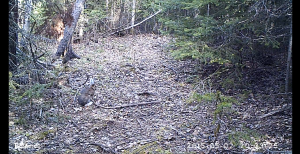
Students are able to see the differences in the changing colours of a rabbit. Above the rabbit is in the fall where it camouflages well into the brown leaves. Below the rabbit is changing colour as the snow begins to fall, notice the rabbit’s ears are still brown as he still needs to blend into the trees behind him.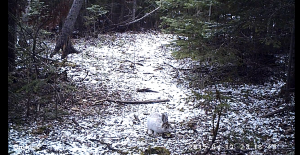
An extension with using the trail cameras in the classroom would be to bring in the trail camera at the beginning of the year and talking about it and then talking to students about how and where it should be set up. Once the teacher has set it up somewhere it can become a monthly thing where the teacher will go and collect the footage and bring it in to the class where everyone can watch in anticipation of what footage you might find during its month long stint in the wild. Trail cams can also be used year-round, providing the opportunity for students to observe the changing seasons and how the animals will change with the seasons. When do we see the most bears on the camera? Are the animals we see the same ones coming back or are they different ones? What are the animals eating in the videos? Opportunities are endless for what students can learn from these videos, not to mention that these videos appeal to students of all ages and can be incorporated into any aspect of the curriculum. Field trips can even be set up so that students can explore the habitat in which their camera is in and discuss the optimal position for it to be placed in. I am so excited to continue to use this piece of technology in my classroom and can’t wait until the spring when I will go with my father-in-law for the first time to collect the footage and see what our local animals were up to this winter.
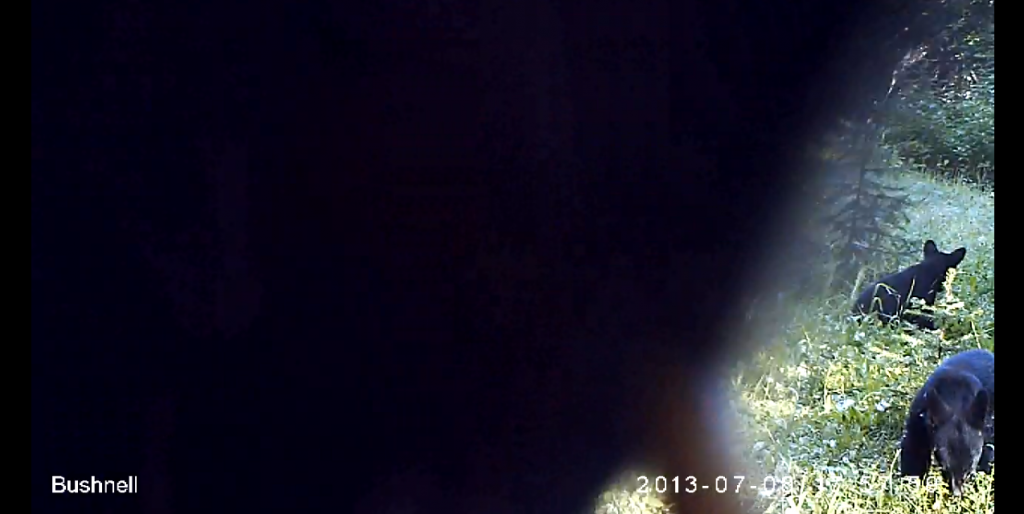
A mom and two cubs were regular visitors during the summer of 2013. Here the mother is checking out the trail camera while her two cubs play and eat in the background. Mothers and their cubs continue to pass by the trail cam every summer.
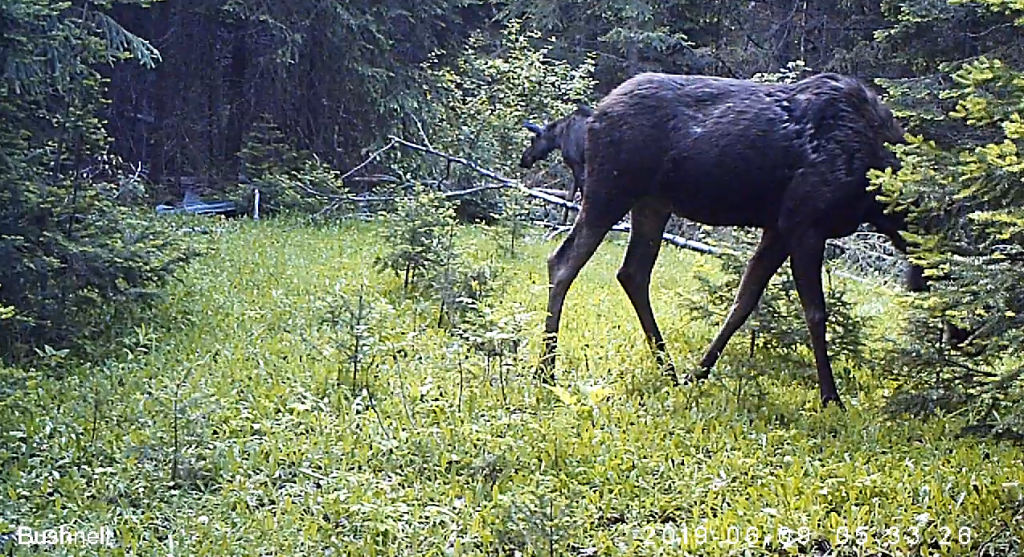
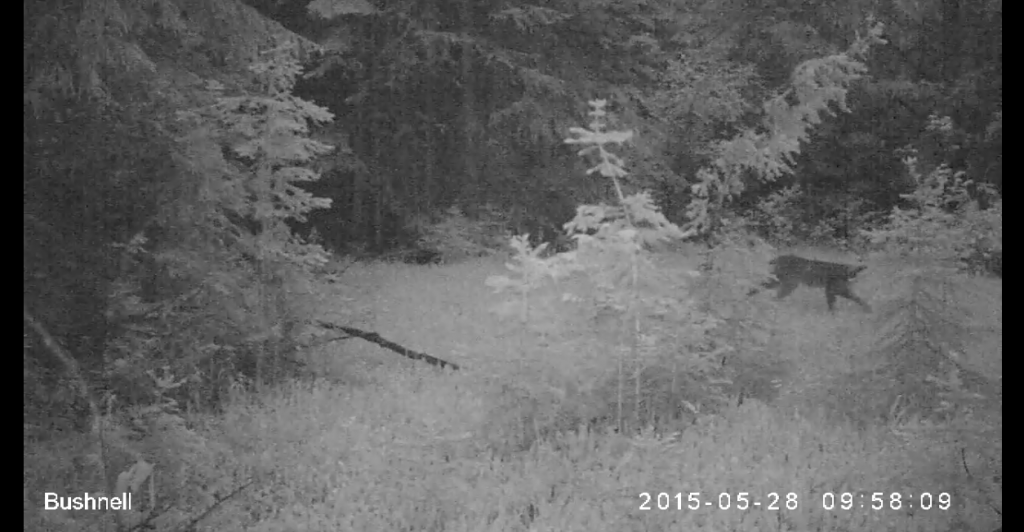
Leave a Reply